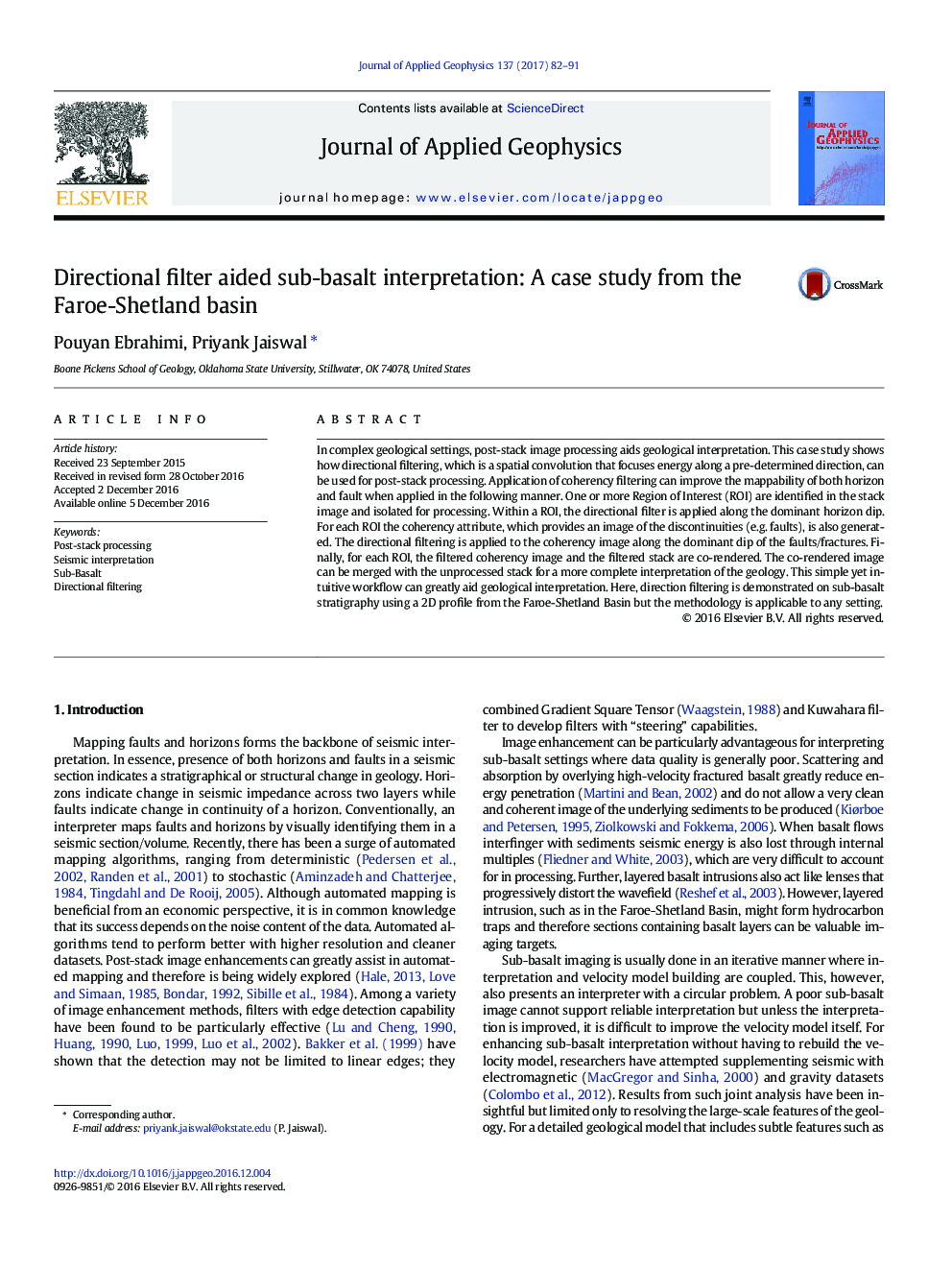| کد مقاله | کد نشریه | سال انتشار | مقاله انگلیسی | نسخه تمام متن |
|---|---|---|---|---|
| 5787180 | 1641114 | 2017 | 10 صفحه PDF | دانلود رایگان |
- Linear features in an image can be enhanced using simple matrix-matrix convolution operations known as directional filtering.
- Application of directional filters on a stack or its coherency image respectively approves horizon and fault mappability.
- Co-rendering of the filtered stack and its coherency image improves understanding of the fault-horizon interactions in the sub-basalt domain.
In complex geological settings, post-stack image processing aids geological interpretation. This case study shows how directional filtering, which is a spatial convolution that focuses energy along a pre-determined direction, can be used for post-stack processing. Application of coherency filtering can improve the mappability of both horizon and fault when applied in the following manner. One or more Region of Interest (ROI) are identified in the stack image and isolated for processing. Within a ROI, the directional filter is applied along the dominant horizon dip. For each ROI the coherency attribute, which provides an image of the discontinuities (e.g. faults), is also generated. The directional filtering is applied to the coherency image along the dominant dip of the faults/fractures. Finally, for each ROI, the filtered coherency image and the filtered stack are co-rendered. The co-rendered image can be merged with the unprocessed stack for a more complete interpretation of the geology. This simple yet intuitive workflow can greatly aid geological interpretation. Here, direction filtering is demonstrated on sub-basalt stratigraphy using a 2D profile from the Faroe-Shetland Basin but the methodology is applicable to any setting.
Journal: Journal of Applied Geophysics - Volume 137, February 2017, Pages 82-91
